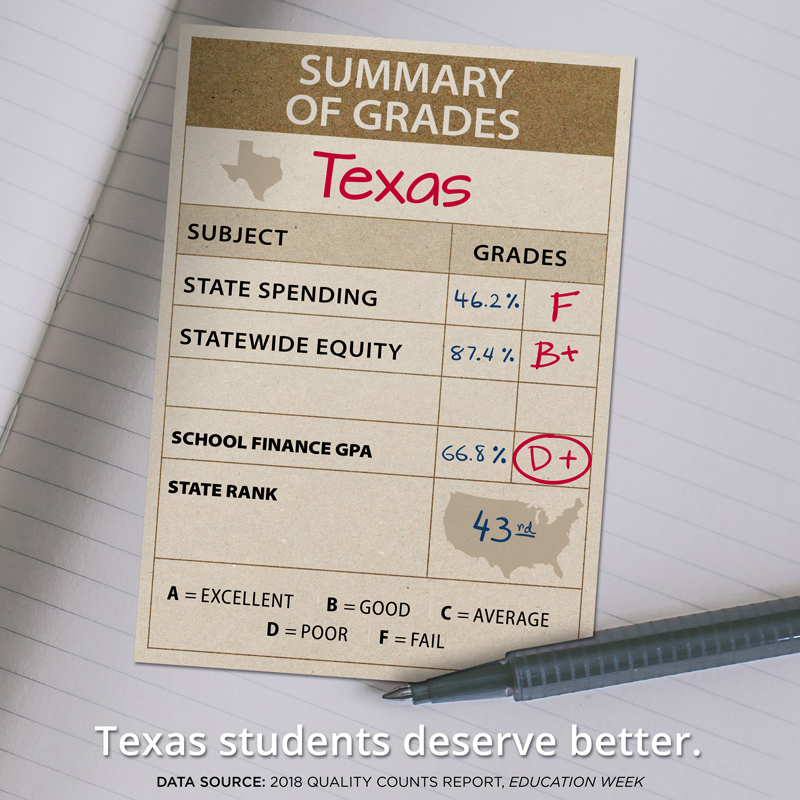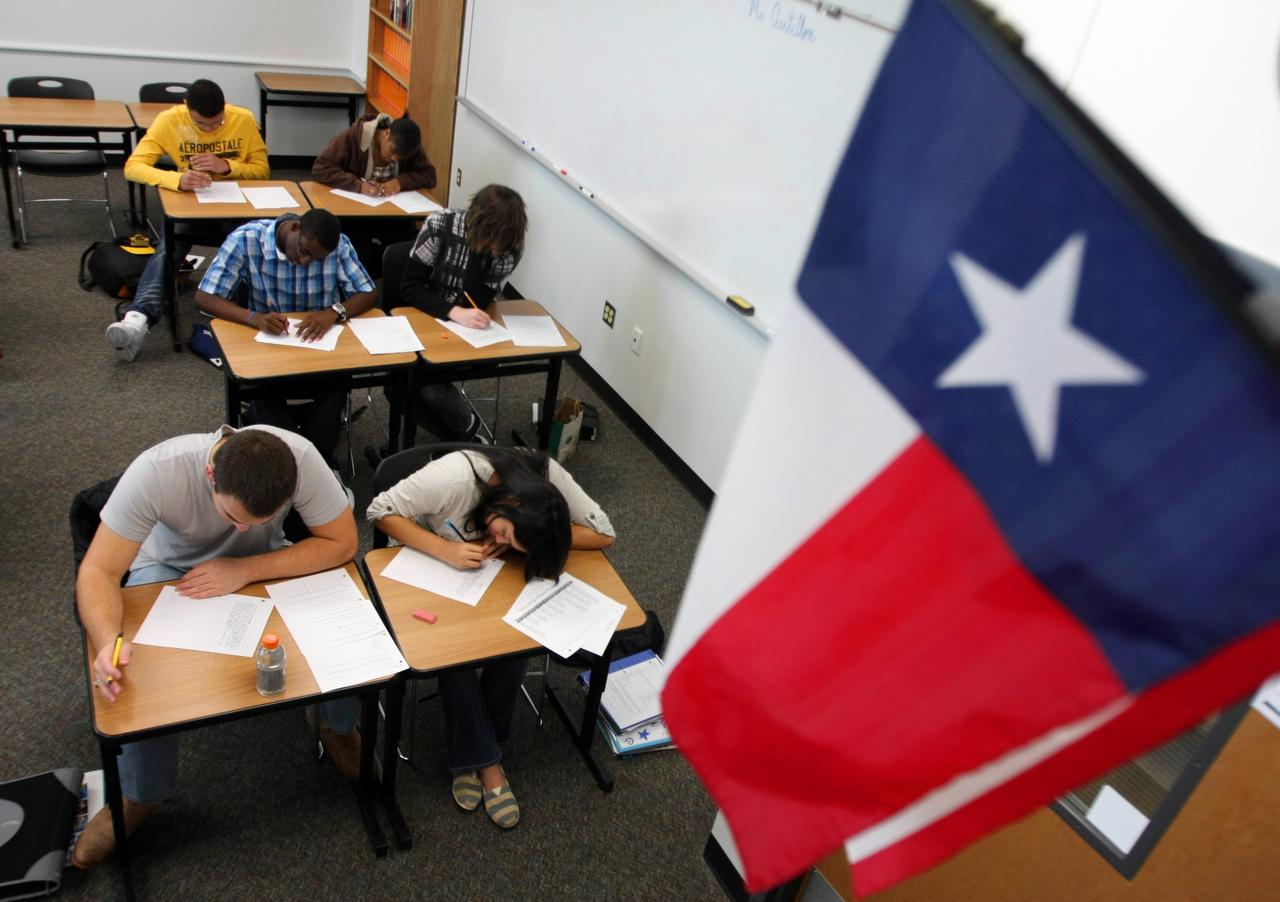Texas is renowned for its size, its rich history, and its unique identity. However, when it comes to education, discussions are often divided. The question arises: Is the education good in Texas? This article aims to explore the factors that contribute to the quality of education in the Lone Star State, analyzing various perspectives and shedding light on the strengths and weaknesses of the educational system. By the end, you will have a clearer understanding of whether Texas provides a stellar educational experience or if improvements are needed to achieve excellence.

This image is property of thumbnails.texastribune.org.
Overview of Education in Texas
Education in Texas is governed by the Texas Education Agency (TEA) and follows a structured system that encompasses various levels of education. From the primary grades to higher education, the education system in Texas strives to provide students with a strong foundation of knowledge and skills necessary for their future success.
Educational system structure
The educational system in Texas begins with early childhood education, specifically pre-K programs, which aim to prepare young students for their academic journey. Following pre-K, students enter the K-12 education system, which is comprised of public, charter, and private schools. K-12 education focuses on meeting the Texas Essential Knowledge and Skills (TEKS) standards to ensure students are academically prepared for the next level of education.
After completing K-12 education, students have the option to pursue higher education at public universities or community colleges, which are further supported by research and innovation efforts in the state. The education system in Texas aims to provide a comprehensive and well-rounded education to all its students.
Funding for education
Funding for education in Texas primarily comes from state and local sources. The state of Texas allocates resources to school districts based on a funding formula known as the Foundation School Program (FSP). The FSP considers factors such as student enrollment, property values, and local tax revenue to distribute funding equitably across districts.
In addition to state funding, local property taxes play a crucial role in financing education in Texas. School districts have the authority to levy property taxes to generate revenue, which contributes to the funding of local schools. However, this reliance on property taxes can lead to funding disparities between districts, with wealthier districts having more financial resources compared to less affluent ones.
Student and teacher demographics
Texas is home to a diverse student population, reflecting the state’s multicultural landscape. Student demographics vary across the state, with a significant percentage of Hispanic and Latino, followed by white and African American students. This diversity brings unique opportunities and challenges to the education system in Texas, emphasizing the importance of inclusive and equitable education practices.
Similarly, the teaching workforce in Texas is also diverse, with educators representing various backgrounds. The state requires teachers to meet specific certification requirements, ensuring they are qualified to teach in their respective subjects or grade levels. Efforts are also being made to increase teacher diversity and address the shortage of teachers in certain subject areas and geographic regions.
Standardized Testing in Texas
Standardized testing plays a significant role in the education system in Texas, serving as a measure of student and school performance. Two key standardized tests used in Texas are the Texas Assessment of Knowledge and Skills (TAKS) and the State of Texas Assessments of Academic Readiness (STAAR).
Texas Assessment of Knowledge and Skills (TAKS)
The TAKS test was implemented in 2003 and was administered to students in grades 3-11. It covered various subject areas, including reading, writing, mathematics, science, and social studies. The TAKS test aimed to assess student proficiency in the state’s academic content standards at each grade level.
State of Texas Assessments of Academic Readiness (STAAR)
The STAAR test replaced the TAKS test in 2012 and continues to be implemented in Texas. It assesses students’ knowledge and skills in subjects such as reading, writing, mathematics, science, and social studies. The STAAR test is aligned with the TEKS standards and has been designed to measure college and career readiness.
Criticism and controversies surrounding standardized testing
While standardized testing has been a cornerstone of the education system in Texas, it has also faced criticism and controversies. Critics argue that overemphasis on standardized tests leads to a narrowed curriculum, teaching to the test, and increased stress levels among students.
Moreover, concerns have been raised about the potential for testing to perpetuate inequities in the education system, particularly for students from disadvantaged backgrounds. The impact of standardized testing on graduation rates and college readiness is also a subject of ongoing debate within the education community.
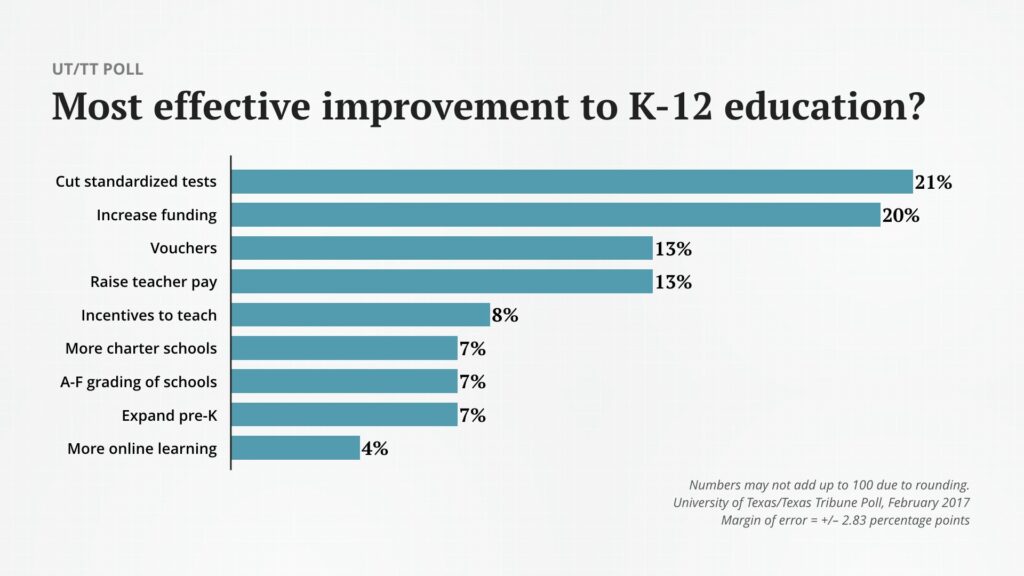
This image is property of static.texastribune.org.
K-12 Education in Texas
K-12 education in Texas encompasses a wide range of educational options, including public, charter, and private schools. The Texas Essential Knowledge and Skills (TEKS) serves as the foundation for curriculum standards in these schools.
Texas Essential Knowledge and Skills (TEKS)
The TEKS outlines the knowledge and skills that students should acquire at each grade level. It provides a framework for developing curriculum and instructional materials, ensuring students receive a well-rounded education. The TEKS covers core subject areas such as English Language Arts, Mathematics, Science, and Social Studies, as well as other specialized subjects.
Quality of K-12 public schools
Public schools in Texas are accountable for meeting the academic standards set by the state. The TEA monitors school performance through a system called the Texas Accountability System, which assigns ratings to individual campuses and districts based on various factors, including student achievement, progress, and closing performance gaps.
While some public schools in Texas have demonstrated academic excellence, there are also schools facing challenges, particularly in economically disadvantaged areas. Efforts are being made to improve the quality of education in these schools through targeted interventions and additional resources.
Charter schools in Texas
Charter schools provide an alternative to traditional public schools in Texas. These schools operate independently and often have a specific educational focus or philosophy. Charter schools are held accountable for their academic performance and are subject to periodic reviews by the TEA.
Charter schools have gained popularity in Texas, offering parents and students additional options for their education. However, the effectiveness and impact of charter schools on overall education outcomes continue to be subjects of debate within the education community.
Private schools in Texas
Private schools also play a significant role in the K-12 education landscape in Texas. These schools operate independently, often with different educational philosophies and approaches. Private schools can offer specialized programs and smaller class sizes, providing parents with additional choices regarding their children’s education.
Private schools in Texas are not subject to the same regulations and accountability measures as public schools but can undergo accreditation processes to ensure quality education. Tuition fees associated with private schools can vary significantly, making private education accessible to some families but not to others.
Higher Education in Texas
Texas boasts a robust higher education system, offering a wide range of opportunities for students to pursue advanced education and research.
Public universities in Texas
Texas is home to several highly regarded public universities, such as the University of Texas at Austin, Texas A&M University, and the University of Houston. These institutions offer a diverse array of academic programs, research opportunities, and extracurricular activities. Public universities in Texas are funded through a combination of state appropriations, tuition fees, and private donations.
Community colleges in Texas
Community colleges play a vital role in providing accessible and affordable higher education to students across Texas. These institutions offer two-year associate degree programs, technical training, and workforce development programs. Community colleges often serve as a stepping stone for students who wish to transfer to four-year universities to complete their bachelor’s degrees.
Community colleges in Texas receive funding from local property taxes, state appropriations, and tuition fees. They collaborate closely with industries and employers to tailor their programs to meet the workforce needs of the local community.
Higher education funding
Funding for higher education in Texas primarily comes from a combination of state appropriations, tuition fees, and federal grants. The state government allocates funding based on a variety of factors, such as enrollment, research output, and institutional priorities. Tuition and fees paid by students supplement these funds, allowing universities and colleges to maintain educational programs and support services.
Research and innovation
Higher education institutions in Texas are known for their contributions to research and innovation. Universities and colleges engage in a wide range of research activities, leading to discoveries and advancements in various fields. Research funding often comes from federal grants, private foundations, and corporate partnerships. These investments in research contribute not only to the advancement of knowledge but also to economic development in the state.
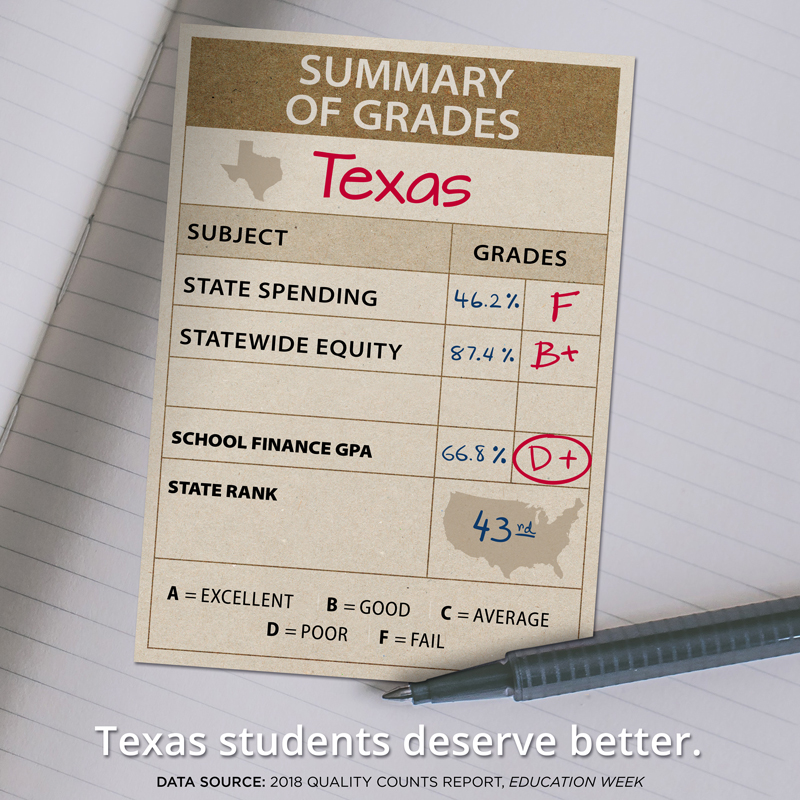
This image is property of www.raiseyourhandtexas.org.
Early Childhood Education in Texas
Early childhood education, particularly pre-K programs, plays a critical role in setting the foundation for a child’s future academic success.
Pre-K programs in Texas
Texas offers free pre-K programs for eligible four-year-old children. These programs aim to provide a developmentally appropriate curriculum that prepares students for kindergarten and beyond. Pre-K programs focus on nurturing social-emotional skills, early literacy, numeracy skills, and critical thinking abilities.
Access and participation in early childhood education
Despite the availability of pre-K programs in Texas, access and participation rates vary across the state. Factors such as eligibility requirements, limited availability of seats, and transportation challenges can create barriers for some students. Efforts are being made to increase access to quality early childhood education in underserved areas and ensure equitable opportunities for all children.
Impact on future academic performance
Research has shown that participating in high-quality early childhood education programs can have a positive impact on a child’s future academic performance. These programs help develop cognitive and socio-emotional skills, improving school readiness and long-term educational outcomes. Investing in early childhood education can lead to reduced achievement gaps and increased educational attainment for all students.
Education Performance and Rankings in Texas
The performance and rankings of the education system in Texas are assessed through various measures, including the National Assessment of Educational Progress (NAEP) scores, comparisons with other states, graduation rates, and college readiness indicators.
National Assessment of Educational Progress (NAEP) scores
The NAEP provides a nationally representative assessment of student proficiency in key subject areas. Texas students’ performance on the NAEP is compared to students from other states, allowing for benchmarking and evaluation of academic achievement.
Comparison with other states
Comparing Texas with other states provides valuable insights into the strengths and challenges of the education system. By analyzing various indicators, such as student achievement, high school graduation rates, and college enrollment, policymakers, educators, and stakeholders can identify areas for improvement and adopt effective strategies from successful states.
Graduation rates
High school graduation rates are an essential indicator of the effectiveness of the education system. Texas has made significant progress in increasing graduation rates over the years. However, there are still disparities among student groups, emphasizing the need for targeted interventions and support to ensure all students have an equal opportunity to earn a diploma.
College readiness
College readiness indicators, such as Advanced Placement (AP) exam participation and performance, ACT/SAT scores, and college enrollment rates, assess the preparedness of Texas students for post-secondary education. Efforts are being made to enhance college readiness by expanding access to rigorous coursework, providing college counseling, and addressing barriers that hinder college enrollment and completion.
This image is property of dallasnews.imgix.net.
Rural Education in Texas
Rural schools in Texas face unique challenges that impact access to resources, technology, and teacher availability.
Challenges faced by rural schools
Rural schools often struggle with limited resources, including funding, personnel, and infrastructure. Lower population density in rural areas can result in reduced opportunities for students, such as limited course offerings, extracurricular activities, and specialized support services. Additionally, geographic barriers and transportation challenges pose obstacles to access for students in remote areas.
Access to resources and technology
Rural schools may face difficulties in providing equitable access to resources and technology compared to their urban counterparts. Limited broadband connectivity and technology infrastructure can hinder students’ access to online resources and educational opportunities. Efforts are being made to bridge the digital divide and ensure rural students have equal access to educational resources and technology.
Teacher shortages in rural areas
Rural schools often struggle with attracting and retaining qualified teachers. The limited availability of teaching positions, geographic barriers, and lower salary scales compared to urban areas contribute to teacher shortages in rural communities. Teacher recruitment strategies, financial incentives, and professional development opportunities are being implemented to address these challenges and ensure a high-quality education for rural students.
Special Education in Texas
Special education programs and services are designed to support students with disabilities and provide them with inclusive and equitable educational opportunities.
Support and services for students with disabilities
The Texas education system provides various support and services for students with disabilities, including Individualized Education Programs (IEPs), specialized instruction, and related services. These services aim to meet the unique needs of students with disabilities and ensure they can access the general curriculum alongside their peers.
Inclusion and mainstreaming practices
Inclusion and mainstreaming practices are important components of special education in Texas. These practices aim to integrate students with disabilities into general education classrooms as much as possible, while also providing necessary support and accommodations. The goal is to create an inclusive learning environment that promotes social interaction, academic growth, and positive outcomes for all students.
Funding and accountability
Funding for special education services in Texas primarily comes from federal and state sources. Federal laws, such as the Individuals with Disabilities Education Act (IDEA), require states to provide appropriate services to students with disabilities. Accountability measures, such as monitoring compliance with legal requirements and assessing student outcomes, ensure the effective utilization of resources and address any potential discrepancies.
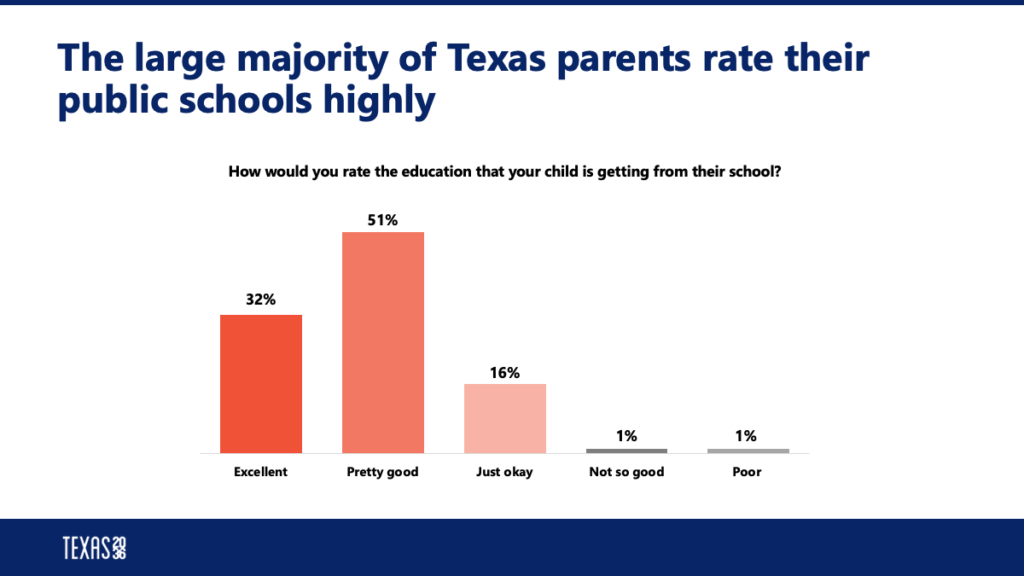
This image is property of texas2036.org.
Bilingual Education in Texas
Bilingual education programs in Texas aim to support students who are English language learners (ELL) and promote bilingualism and biliteracy.
Dual language programs
Dual language programs are designed to develop proficiency in both English and another language. These programs provide instruction in both languages and promote bilingualism, biliteracy, and cross-cultural understanding. Dual language programs benefit both English-speaking students and non-English-speaking students, fostering a sense of inclusivity and supporting academic success.
English as a Second Language (ESL) programs
ESL programs are designed to support students who are English language learners by providing specialized instruction in English language development. These programs focus on developing students’ English language skills, including listening, speaking, reading, and writing, to help them succeed academically.
Benefits of bilingual education
Bilingual education offers numerous benefits to students, including enhanced cognitive abilities, better academic performance, and improved intercultural and communication skills. By valuing and supporting students’ native languages while developing English proficiency, bilingual education promotes a culturally diverse and inclusive learning environment.
Teacher Training and Certification in Texas
To ensure quality education, Texas has established specific requirements for becoming a teacher, alternative certification programs, and professional development opportunities.
Requirements for becoming a teacher in Texas
To become a teacher in Texas, individuals must meet specific requirements outlined by the state. These requirements include completing an approved teacher preparation program, passing the appropriate certification exams, and meeting the necessary qualifications for the desired subject area or grade level. Texas also requires teachers to participate in ongoing professional development to maintain their certification.
Alternative certification programs
Alternative certification programs provide an alternative pathway for individuals with a bachelor’s degree, who did not complete a traditional teacher preparation program, to become certified teachers. These programs often combine coursework and on-the-job training, allowing individuals to develop the necessary skills and knowledge needed to teach in Texas schools.
Professional development opportunities
Professional development plays a crucial role in supporting teachers’ growth and enhancing their instructional practices. Texas offers various professional development opportunities, including workshops, conferences, and graduate programs. These opportunities allow teachers to stay updated on educational research, learn new teaching strategies, and continuously improve their effectiveness in the classroom.
In conclusion, the education system in Texas encompasses a range of educational opportunities, from early childhood education to higher education. While the Texas education system faces challenges such as standardized testing controversies, funding disparities, and teacher shortages, efforts are being made to ensure all students have access to quality education. With a commitment to continuous improvement, equitable practices, and investment in teacher training and support, Texas strives to provide its students with a strong educational foundation for their future success.
